Introduction

What we have here are two near-200cc, single cylinder, motorcycles that offer ease of riding, fuel efficiency, and low cost of ownership over hard-core, enthusiast-pleasing performance. Not that these are duds; far from it. Both these bikes are quick off the line, they sound good (in their own way), and feel right at home around a twisty road.
But, which of the two – the established TVS Apache RTR 200 4V, or the new kid Hero Xtreme 200R – should you settle for?
Looks

Lets cut to the chase. The TVS is the better-looking bike here. It’s better proportioned; it has better materials; and there’s more attention to detail all round. The bikini-fairing with the small peak, the muscular tank, the split seat, and the sharp tail give the RTR 200 a modern and performance-centric aura.
It also uses higher grade alloys for its levers. And, better quality hand grips. Not to mention, KYB forks and petal discs front and back. Then, the rider’s footrests are spring loaded, and the underseat storage is easier to access.
The Xtreme doesn’t get spring loaded footrests. Plus, it has a face only a mother could like. Okay, it’s not that bad. But, the 200R’s fairing design isn’t edgy, modern, desirable or even wolf-like, contrary to what Hero claims. It’s certainly not a face that will entice buyers, and that, is a huge miss.

More so, because once you move past the face, the 200R is actually a good-looking bike. The large fuel tank flows seamlessly into the seat. The tail then flares out effortlessly from the seat. And although the tail and the tank don’t exactly follow the same design ethos, these still manage to sit well with the eyes.
Now, in terms of quality, the 200R trails the RTR 200. Things like the footrests, the fuel cock, and the brake and gear-shift levers on the 200R just don’t have the same upmarket appeal as the TVS’. And, the Hero could do with better looking clocks.
Instrumentation and Seating

In fact, the instrumentation on the Xtreme 200R is quite basic for its class. Yes, it has a digital display, but the readouts are limited. All it shows are two trip meters, a clock, service reminder and the odometer. And, among the telltale signs, there’s side-stand indication. The rev counter meanwhile, is an analogue unit. Now, this design would have been lovely in 2010. But, today, the game has truly moved on.

The Apache 200 has kept up with the times. It has fully-digital instrumentation. There’s tacho, and an odo, and two trip meters. It has a clock, a service reminder, and more. There’s a 0-60kmph timer, a top speed recorder, shift light indication, a lap timer, and a gear indicator as well. Overall, the instrumentation is good to look at, functional, and easy to read.

The Apache also has street-friendly seating ergonomics. It has relatively high set clip-ons, the seat is low, and the footpegs though rearset, aren’t unusually so. As a result, the RTR 200 is a nice place to spend time on - it doesn’t want to kill your back or wrists, or your thighs or calves for that matter. And because you can get both your feet firmly on the ground, you feel more confident riding it in stop-and-go traffic or over poor roads.

The Xtreme is similar in this regard. In fact, it has a lower seat height compared to the Apache as well. And, it has more forward set footpegs. The handlebar too, is set lower. Overall, it scores slightly higher than the TVS on the ergonomics front.
It does have a hard seat though. But, we spent a day riding the bike, and even though the 200R’s seat might not feel as cushy as the TVS’, it’s nowhere near uncomfortable. Moreover, we prefer the one-piece seat design over the TVS’ split seat as it gave us more room to move around on the bike.
Performance and Handling

Performance wise, it’s a close call. Both bikes displace just under 200cc. Both use a single cylinder, air-cooled setup fuelled by carburetors. But, the Apache develops more power and torque courtesy a four valve head and oil-cooling. This also allows the TVS to rev higher.
To get the stats out of the way, the Apache RTR 200 4V revs close to 10,500rpm, develops 20.7bhp and 18.1Nm, and weighs 148kg. The Xtreme 200R weighs exactly the same, but it makes lesser power and torque; 18.1bhp and 17.1Nm, to be precise. And, it also only revs to 9,000rpm. Both engines, meanwhile, are mated to 5-speed gearboxes, with the Apache running on a significantly larger rear sprocket compared to the Hero.

But, when it comes to on-road performance, the RTR 200 records a significantly higher top speed; in excess of 130kmph on the speedo. The 200R in the meantime, with my weight, struggled to even get to an indicated 120kmph. Not surprisingly then, the Hero feels quicker off the line. It also gets to its redline in a hurry in the first few gears. All of which indicate a closer ratio gearbox compared to the TVS.

What’s more, the Hero has a proper performance air filter like induction noise. So, every time you open the throttle with purpose, the induction note only adds to the sense of acceleration. Keeping timing gear aside, almost everyone who rode the 200R in the team, judged it to be the quicker than the TVS. And in a sense that’s great for Hero because the Xtreme now has a USP to build on.
The 200R manages to outshine the RTR 200 in other crucial areas as well. The Hero has a slicker shifting gearbox. It has a crisper throttle response. It brakes better; be it in terms of bite, feel, progression or power. And, it is the more flickable of the two bikes, making it more of a hoot to ride in the city.
Our take

The RTR 200 you see here, is the Race Edition, which comes with a slipper clutch and racier graphics compared to the regular RTR 200. But, both get dual channel ABS. For the sake of this test though, we will consider the regular model. The regular Apache RTR 200 4V ABS is priced at Rs 1.32 lakhs on the road in Mumbai. The Xtreme 200R, on the other hand, costs Rs 1.09 lakhs.
This near Rs 25,000 price difference gets you dual channel ABS instead of a single channel setup on the Hero. It gets you a more modern and more desirable digital instrumentation. It gets you clip-on handlebars, KYB front forks, nicer looking petal discs (which don’t work as well as the Hero’s setup, by the way), and some nicer, more upmarket components like the alloy levers.
But, as far as on-road performance goes, it’s quite jumbled up. The Xtreme feels quick; it handles better; and it feels more connected and fun to ride than the TVS. But, the difference is slight. The TVS, on the other hand, has a higher top speed, a more relaxed power delivery, and a more comfortable ride.
But, the TVS is less of a compromise compared to the Hero. It is, as a result, the better rounded product. And, as our points reveal, it’s good enough to justify the premium.
Final Scores
| Parameters | Max Points | TVS Apache RTR 200 4V | Hero Xtreme 200R |
|---|---|---|---|
| Rank | 1 | 2 | |
| Looks & styling | 10 | 8 | 7 |
| Ergonomics & Quality | 10 | 8 | 7 |
| Features & Tech | 10 | 6 | 4 |
| Engine & Gearbox | 10 | 7 | 7.5 |
| Performance | 10 | 7 | 7 |
| Ride Quality | 10 | 8 | 7 |
| Handling & Braking | 10 | 7 | 7.5 |
| Fuel Efficiency | 10 | 5 | 4 |
| Price & Warranty | 10 | 5 | 6 |
| Desirablility | 10 | 4 | 4 |
| Total | 100 | 65 | 61 |
Gallery
1/113
Hero Xtreme 200R vs TVS Apache RTR 200 4V
Double Tap to Zoom











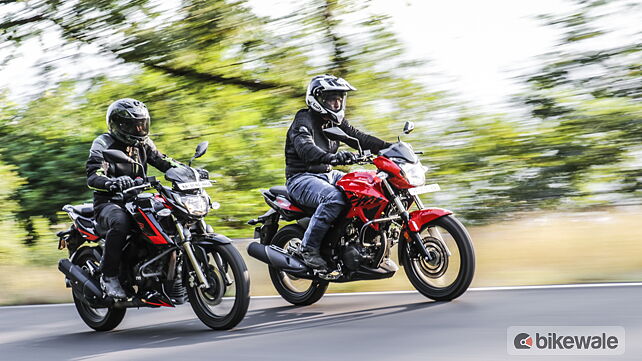












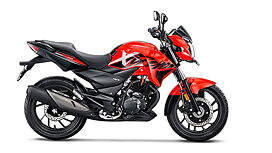
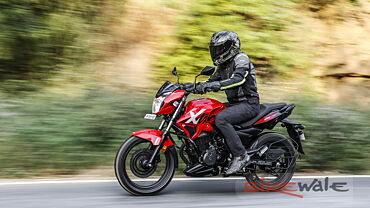
















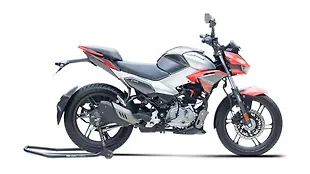
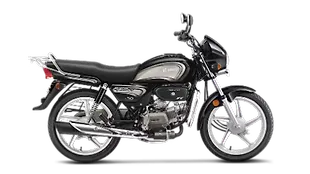
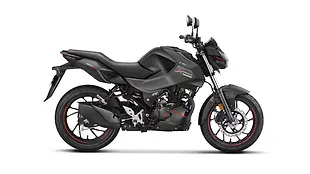





![KTM 390 Adventure X [2025] KTM 390 Adventure X [2025]](https://imgd.aeplcdn.com/272x153/n/cw/ec/190885/390-adventure-x-2025-right-side-view.jpeg?isig=0&q=80)